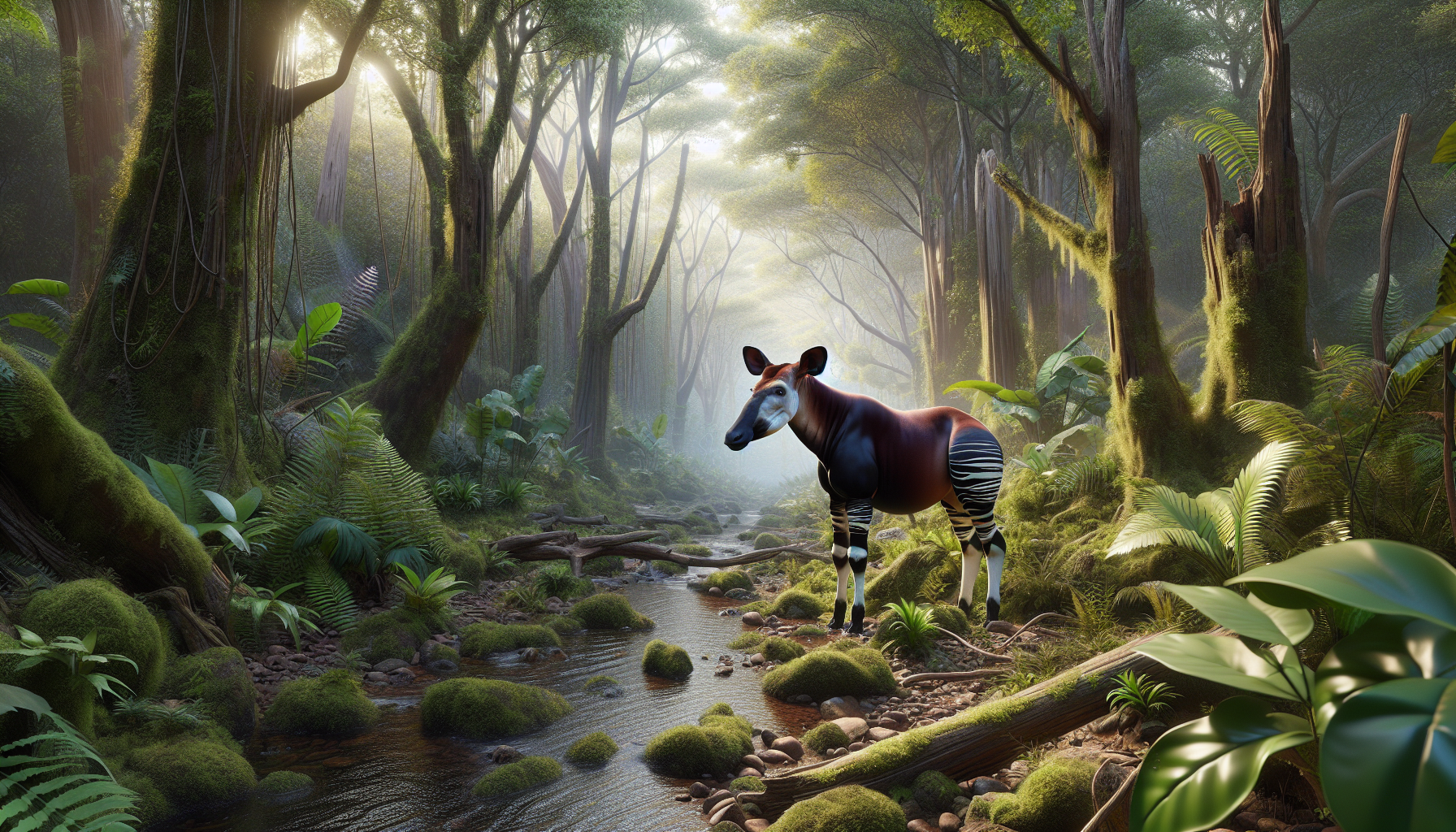Welcome to the wonderfully mysterious world of the okapi, a creature that looks like it’s been expertly (or accidentally?) assembled from parts of different animals. Known as the “forest giraffe,” the okapi is one of nature’s best-kept secrets, residing deep in the lush rainforests of the Democratic Republic of the Congo. Because of their limited range, you may not be familiar with this amalgamation of nature, so join us as we unveil some fascinating facts about the okapi that will surely leave you spellbound!
Okapi Facts

Fact 1: Okapi are Not Related to Zebras
When you first lay eyes on an okapi, you might think that it’s a zebra playing dress-up at a giraffe costume party. But don’t be fooled! The okapi is indeed more closely related to the giraffe than the zebra. Let’s delve into this unique appearance that constantly leaves people intrigued.
The okapi has a velvety coat of a rich chocolate brown color, coupled with striking horizontal white stripes on its hindquarters and upper legs, reminiscent of a zebra. You might wonder what evolutionary advantage these stripes provide. In the dense, shadowy rainforests they call home, these stripes serve as excellent camouflage, breaking up their shape and helping them blend in with the play of light and shadow.
Moreover, the okapi’s short, covered antlers, called ossicones, are similar to those of giraffes, and they have long, flexuous necks on par with their towering cousins. Despite their zebra-like appearance, these striking animals have secured their place on team giraffe!
Fact 2: Okapi Aren’t Socialites
We’ve established that the okapi is not easy to spot in the wild, but how much do we really know about their behavior? Well, the answer is – not much! One of the less obvious but noteworthy okapi facts is how little we know about their social structure and life in the wild.
Okapis are notoriously elusive and solitary animals, rarely seen in herds or groups. They are diurnal creatures, conducting most of their activities during the day. Their shy, solitary nature is believed to stem from their need to avoid predators like leopards and human hunters.
While okapis can live up to thirty years in captivity, their lifespan in the wild remains somewhat mysterious due to the challenges of observing them in their natural habitat. It’s these elusive traits that make the okapi both intriguing and worthy of conservation efforts.
Fact 3: Incredible Graspy Tongues
The okapi’s tongue is almost as impressive as its distinctive appearance. This prehensile tongue (fancy term for capable of grasping), measuring around 18 inches long, is a multifunctional tool that every okapi relies upon.
The okapi uses its lengthy tongue to grasp leaves, buds, branches, grasses, and fruits, making it an expert forager. And talk about versatility! It even uses its tongue to groom its eyes and ears, which is quite a useful ability in the tick-infested rainforests.
Okapis are discerning eaters with a diet consisting of over 100 plant species. They are believed to have an extraordinary ability to detect toxic plants, discerning what’s wholly safe from what’s potentially harmful. Consider this one of the most fascinating facts about okapi, elevating them to gourmet connoisseur status in the animal kingdom.
Fact 4: Facing Pressure from Poaching and Deforestation
The okapi, although fascinating, is a species under threat. The intertwining issues of deforestation, poaching, and habitat loss are affecting their population severely. Listed as endangered by the International Union for Conservation of Nature (IUCN), these gentle creatures face a precarious future unless significant conservation efforts are undertaken.
The Okapi Conservation Project, initiated in 1987, has been working tirelessly to protect these magnificent animals, along with their unique rainforest habitat. Efforts include education, wildlife protection, and community engagement to preserve both the okapi and the extraordinary biodiversity of the Congolese rainforests.
Educating people about the importance of the okapi and its habitat is crucial. Spreading awareness about these fascinating creatures can help highlight the necessity of their protection, ensuring that future generations can enjoy learning more okapi facts while marveling at their enigmatic presence.
As unique as they are, okapis remind us of the incredible diversity of life on Earth. Their conservation is crucial, not just for maintaining biodiversity, but also for preserving a sense of wonder and curiosity in our natural world. By shedding light on such interesting facts about okapi, we contribute to protecting these living enigmas for generations to come.
To conclude, remember that the okapi may play hard to get, but once you delve into the world of this captivating creature, it’s hard not to become entranced by the forest giraffe’s charm and mystery.

